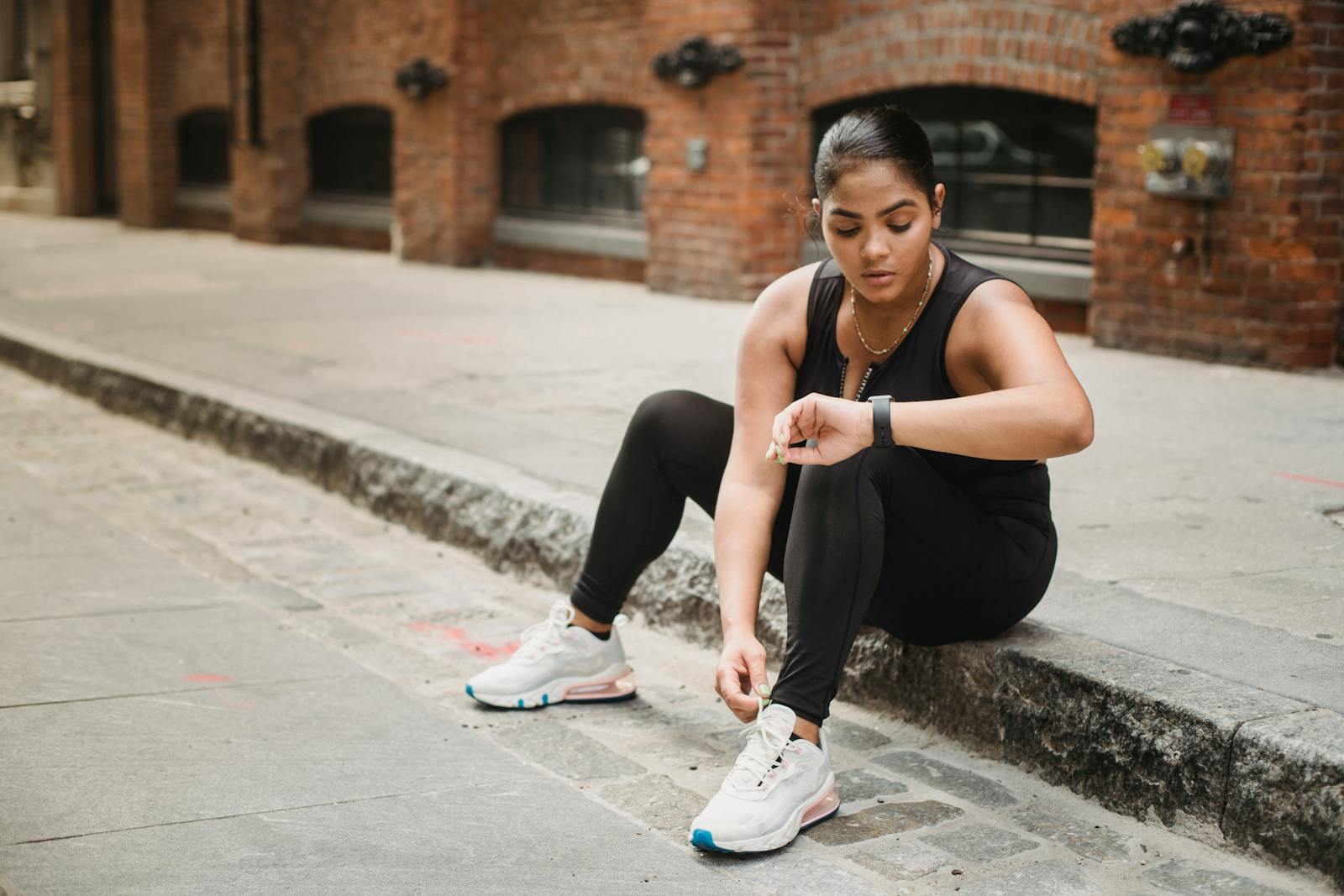Quick and Easy Home Workouts for Busy People
Okay, let’s be real. Life gets crazy. Between work, family, and everything else, finding time for a proper workout can feel impossible. Honestly, it’s easy to let fitness slide, right? But what if you could squeeze in some effective exercise without spending hours at the gym? And without needing a ton of fancy equipment? That’s the sweet spot we’re aiming for – quick, easy, and something you can actually stick with. This isn’t about becoming a bodybuilder overnight; it’s about feeling better, having more energy, and making fitness a sustainable part of your life, even when things are hectic.
Creating Your Ideal Quick Workout Routine
So, where do you even begin? It’s tempting to jump into some crazy intense program, but that’s usually a recipe for burnout. A better strategy? Start small. Think about what you enjoy doing. If you hate running, forcing yourself onto the treadmill isn’t going to work in the long run. Maybe you prefer dancing, or bodyweight exercises, or even just a brisk walk. The key is finding something you won’t dread.
One super-common pitfall is trying to do too much, too soon. People often go from zero to sixty, end up sore for days, and then… well, then they stop altogether. Instead, aim for consistency over intensity, especially in the beginning. Ten to fifteen minutes a few times a week is a fantastic start. You can always build from there. Think of it as planting a seed, not building a skyscraper.
What tools might you need? Honestly, not much. For many bodyweight workouts, all you need is your own body and maybe a bit of floor space. A yoga mat can be nice, but even a towel will do. If you want to add some resistance, resistance bands are cheap, portable, and super versatile. Dumbbells are great too, but start light. You’re not trying to lift a car, just challenge your muscles a little. Ever considered using household items? Canned goods or water bottles can work as makeshift weights.
Let’s talk examples. A quick circuit workout could look like this: squats, push-ups (or modified push-ups against a wall), lunges, and planks. Do each exercise for 30 seconds, followed by a short rest. Repeat the circuit a few times. Another option? A brisk walk or jog outside. Or maybe a quick dance session in your living room. There are tons of free workout videos online too – just search for “quick home workout” and see what appeals to you. And remember: even 10 minutes is better than zero minutes. That’s a small win worth celebrating.
Now, where things get tricky is staying motivated. Life happens, right? You’ll have days when you just don’t feel like it. That’s normal. The trick is to not let one missed workout turn into a week, and then a month. Schedule your workouts like you would any other important appointment. And find an accountability partner – someone to exercise with, or just someone to check in with. It really helps. Or even better, if you feel your motivation slipping, just promise yourself 5 minutes. Usually, once you get started, you’ll feel like doing more. Honestly, the hardest part is often just beginning.
Common Mistakes and How to Avoid Them
One of the biggest mistakes people make is neglecting proper form. Bad form can lead to injuries, and that’s the quickest way to derail your fitness goals. So, take the time to learn the correct technique for each exercise. Watch videos, ask a trainer for advice, or even just record yourself and check your form in the mirror. It’s worth the effort.
Another mistake is not warming up and cooling down. These are crucial for preventing injuries and improving recovery. A few minutes of light cardio and stretching before your workout can make a big difference. And a few minutes of stretching afterwards helps your muscles recover. It’s like telling your body, “Okay, workout’s over – time to relax.”
Ignoring your body’s signals is also a big no-no. If you’re feeling pain, stop. Don’t push through it. Pain is your body’s way of saying something’s wrong. Listen to it. It’s far better to take a break and come back stronger later than to injure yourself and be out of commission for weeks. And if you’re really unsure, consider checking in with a physical therapist. They’ve seen it all, honestly.
Maximizing Your Time: Efficient Workout Strategies
Okay, so you’re committed to quick workouts. Great! But how can you make those workouts as effective as possible? That’s the million-dollar question, isn’t it? High-Intensity Interval Training (HIIT) is your friend. HIIT involves short bursts of intense exercise followed by brief recovery periods. Think 30 seconds of jumping jacks, followed by 15 seconds of rest. Repeat that a few times, and you’ve got a super-efficient workout that burns a ton of calories in a short amount of time. The magic, so they say, is in the intervals.
Another time-saver is focusing on compound exercises. These are exercises that work multiple muscle groups at the same time, like squats, lunges, push-ups, and rows. They give you more bang for your buck than isolation exercises that only target one muscle group. Plus, they mimic real-life movements, which can translate to better functional fitness – making everyday activities easier. Want a small win? Try doing squats while you brush your teeth. Seriously!
Now, what tools come in handy for maximizing efficiency? A timer is essential for HIIT workouts. You need to be able to track your intervals accurately. There are tons of free timer apps you can download on your phone. A heart rate monitor can also be helpful, but it’s not essential. It can give you a better idea of how hard you’re working, though. And remember those resistance bands? They’re perfect for adding intensity to compound exercises.
People often underestimate the power of bodyweight exercises. You don’t need fancy equipment to get a great workout. Push-ups, squats, planks, lunges – these can all be modified to make them easier or harder, depending on your fitness level. Plus, you can do them anywhere, anytime. Ever considered squeezing in a set of squats while you wait for the kettle to boil? Small bursts of activity add up.
Where it gets tricky is pushing yourself hard enough during those intense intervals. You should be breathing hard and feeling challenged. But you shouldn’t be so exhausted that you can’t maintain good form. It’s a balance, honestly. And to be fair, sometimes it takes a while to find that sweet spot between challenging and overdoing it. So, yeah… don’t get discouraged if you don’t nail it right away.
And don’t forget about recovery. Your muscles need time to repair and rebuild after a workout. That means getting enough sleep, eating a healthy diet, and maybe even incorporating some active recovery days – light activities like walking or yoga. Recovery is just as important as the workout itself. If you skip it, you’re sabotaging your progress. So, yeah… listen to your body. It’ll thank you for it.
Sample Efficient Workouts You Can Do At Home
Let’s get practical, then. Need some quick workout ideas? Okay, here are a few to get you started:
- The 15-Minute HIIT Blast: 30 seconds of burpees, 30 seconds of rest. 30 seconds of mountain climbers, 30 seconds of rest. 30 seconds of jumping jacks, 30 seconds of rest. 30 seconds of squat jumps, 30 seconds of rest. Repeat the circuit 3 times.
- The Bodyweight Blitz: 10 push-ups (on your knees if needed). 15 squats. 20 lunges (10 per leg). 30-second plank. Repeat the circuit 3-4 times.
- The Resistance Band Routine: 15 resistance band rows. 15 resistance band bicep curls. 15 resistance band squats. 15 resistance band lateral walks (15 steps in each direction). Repeat the circuit 3 times.
The small win here is that you just read some actual workouts! Now, the next step? Try one. Seriously. Pick one, set a timer, and just go for it. You might surprise yourself. And that feeling of accomplishment? That’s a pretty powerful motivator.
Making Fitness a Habit in Your Busy Life
So, you’ve got some quick workout ideas, you know about HIIT, and you understand the importance of consistency. But how do you actually make fitness a habit when your life is already jam-packed? That’s the real puzzle, actually. It’s one thing to do a workout or two, but it’s another thing entirely to make it a sustainable part of your routine. The key, so they say, is to integrate fitness into your existing lifestyle, rather than trying to shoehorn it in as an afterthought.
One way to do this is to look for opportunities to be more active throughout the day. Take the stairs instead of the elevator. Walk or bike to work if possible. Stand up and stretch every hour if you have a desk job. Small bursts of activity throughout the day can really add up. Honestly, it’s about finding those little pockets of time and making the most of them. Ever thought about having a walking meeting instead of sitting in a conference room? Seems a bit out there, but it works!
Another trick is to associate your workout with something you already do regularly. For example, maybe you do a quick workout right after you brush your teeth in the morning, or before you sit down to watch your favorite TV show. This creates a cue that triggers your workout habit. And if you miss one, don’t beat yourself up. It happens. Just get back on track the next day. We’re all human, after all.
What if your schedule is truly chaotic? Okay, then you need to get creative. Break up your workout into smaller chunks. Maybe do 10 minutes in the morning, 10 minutes at lunch, and 10 minutes in the evening. Or try “exercise snacking” – short bursts of activity throughout the day. A few push-ups while you wait for the coffee to brew, a quick walk around the block during a phone call… little things make a difference.
People often struggle with finding the “perfect” time to work out. Honestly, there’s no such thing. The best time to work out is the time that works best for you. Experiment with different times of day and see what feels right. Maybe you’re a morning person, or maybe you prefer to exercise in the evening. Or maybe you just squeeze it in whenever you can. The key is to be flexible and adaptable.
Now, where it gets tricky is when life throws you curveballs. Travel, illness, family emergencies… these things happen. And they can easily derail your fitness routine. The important thing is to not let these setbacks throw you off track completely. Have a backup plan. Maybe you can do bodyweight exercises in your hotel room when you’re traveling. Or maybe you just take a few days off to recover when you’re sick, and then ease back into your routine gradually. The small win is just getting back at it, no matter what.
The Importance of Goal Setting and Tracking
Setting realistic goals is huge. If your goal is to lose 50 pounds in a month, you’re setting yourself up for disappointment. But if your goal is to work out for 20 minutes three times a week, that’s something you can actually achieve. Start small, and gradually increase your goals as you get fitter. And celebrate those small wins along the way! It’s easy to get discouraged if you only focus on the big picture. But those little victories? They add up, honestly.
Tracking your progress is also a great way to stay motivated. Use a fitness app, a journal, or even just a calendar to record your workouts. Seeing how far you’ve come can be incredibly encouraging. Plus, it helps you identify patterns and make adjustments to your routine as needed. If you’re not seeing the results you want, maybe you need to tweak your workouts, or your diet, or your sleep schedule. It’s all connected, so they say.
Quick Takeaways
- Start small and focus on consistency over intensity.
- Find activities you enjoy – it makes sticking to a routine much easier.
- HIIT and compound exercises are your friends for efficient workouts.
- Integrate fitness into your daily life – look for small opportunities to be active.
- Set realistic goals and track your progress – celebrate the small wins.
- Don’t let setbacks derail you – have a backup plan and get back on track.
- Listen to your body – rest and recovery are just as important as the workouts themselves.
Conclusion
So, there you have it – a bunch of ideas for quick and easy home workouts that even the busiest people can squeeze into their day. Honestly, the biggest takeaway here is that fitness doesn’t have to be an all-or-nothing thing. You don’t need to spend hours at the gym to see results. Even a few minutes of exercise can make a difference, both physically and mentally. And to be fair, it’s not always easy. There will be days when you don’t feel like it, days when life gets in the way. That’s normal. The key is to just keep showing up, even if it’s just for a little bit.
What’s worth remembering, then? Maybe it’s the idea of “exercise snacking” – those little bursts of activity that can add up over the course of a day. Or maybe it’s the power of HIIT for squeezing a ton of workout into a short amount of time. Or maybe it’s just the simple reminder that consistency is key. Honestly, it’s probably a combination of all those things. Finding what works for you is the real trick. There’s no one-size-fits-all solution, and that’s okay. So, yeah… experiment, adjust, and find a routine that fits your life. Because honestly, the best workout is the one you’ll actually do.
And finally, remember those small wins. Every workout you complete, every healthy choice you make, is a victory. Celebrate them! Because honestly, those small wins are what build momentum and create lasting change. So, what are you waiting for? Go do something active. Even if it’s just for 10 minutes. You’ll be glad you did.





